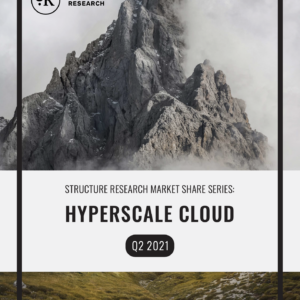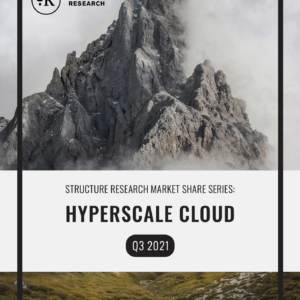Description
The hyperscale cloud sector continues to push forward and a solid level of stabilisation has taken hold. After an uneven period that saw growth rates bounce around and decelerate, the sector finds itself on solid footing. AI is driving uptake in tools and services delivered from cloud infrastructure platforms and simultaneously motivating raw infrastructure expansions and migrations. This has led to steady top-line revenue growth and positioned the sector for growth acceleration as the overall demand profile continues to be healthy and robust. Meanwhile, the scale effects inherent to hyperscale platforms continue to kick in and flow through to the bottom line.
The recent quarter saw a number of developments that drew out the bearish voices that have expressed concern that the hyperscale sector is expanding too fast, with demand and supply not properly aligned and a possible overbuild situation emerging. There were a number of reports of hyperscale pullbacks from infrastructure commitments that set off some alarm bells and then the revelations around the DeepSeek training model out of China and its exceedingly low cost structure led to what can only be described as hyperventilation. Neither of these developments support a bearish view of the hyperscale sector’s outlook. The hyperscale pullbacks have proved to be merely capacity management and optimisation exercises, and CapEx levels and commitments have remained unchanged, while demand widely outpaces supply. DeepSeek’s progress should be expected as innovation and optimisation around AI training models was bound to be realised. But this should actually help the sector as Jevons Paradox plays out and lower costs produce increased levels of uptake and adoption as a result.
The hyperscale cloud sector is expanding and could further expand in the coming years. In the recent quarter, we added ByteDance’s public cloud service to our tracking. This gives us eight public cloud infrastructure platforms – four from the US and four from China – to make up the market. The Chinese hyperscale platforms have struggled for a while, but have finally started to recover. They are seeing accelerating growth and investing in CapEx. The hyperscale sector could gain more membership sooner than later as CoreWeave grows aggressively and NVIDIA looks to be a possible entrant into the business of direct infrastructure service delivery at scale.
Hyperscale cloud growth remains a positive for the data centre colocation market. Hyperscalers are self-building, but their requirements are rapidly shifting, and this will create colocation opportunities in edge-hyperscale scenarios, high-density environments, secondary locations and emerging markets. Given the shifting landscape, hyperscalers are looking for more flexibility. They are looking for bridge capacity and solutions to address planning misses. They are also actively blurring the lines between colocation, pre-development, BTS and powered shells. All remain viable options that apply in different scenarios and points in time in the hyperscale development process.
This report provides comprehensive growth rate projections and total revenue estimates for the world’s eight hyperscale cloud platforms (up from seven last quarter) on a five-year basis. Last quarter, we added ByteDance’s public cloud service BytePlus to these numbers. Included are geographic splits and a total market summation. This latest version also features a refresh of our hyperscale cloud region and interconnection node tracking. We have upped our projections again, given the uptick in overall demand and global expansion patterns, and have hyperscale cloud projected to cross the trillion-dollar mark and reach $1,022b in value in 2030, with a five-year CAGR of 29.2%. The five-year CAGR had fallen in the 21-24% range over the last few years, but is set to continue climbing as market conditions change and AI starts to gain significant forward momentum.






